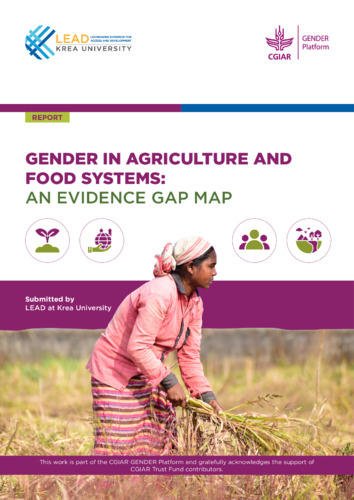Gender in agriculture and food systems: An Evidence Gap Map
Abstract
The 2007-2008 global food-price crisis disproportionately affected women, particularly smallholder women farmers (Sexsmith et
al. 2017).1 The subsequent responses by governments, multilateral agencies and other institutions over the last decade do not seem to have had the intended effect of addressing underlying power imbalances in agriculture and food systems (Botreau and Cohen 2020).2 CGIAR has been at the forefront of a mission to change the status-quo through impactful gender research. The CGIAR Generating Evidence and New Directions for Equitable Results (GENDER) Platform catalyzes targeted research on gender equality in agriculture and food systems and collaborates with decision-makers to achieve a new normal: a world in which gender equality drives a transformation towards equitable, sustainable, productive and climate-resilient food systems. Closing the knowledge gaps in gender and agriculture and food systems is a crucial step towards achieving this vision. This Evidence Gap Map (EGM) attempts to consolidate and integrate evidence on gender in agriculture and food systems, and provides a framework for prioritizing research across different themes, enabling focused evidence synthesis and generation. While most existing EGMs (Moore et al. 2021)3 focus on synthesizing evidence on impact estimates of interventions, this EGM presents a broader landscape of evidence across eleven identified themes in gender in agriculture and food systems. This EGM, however, does not synthesise information, but presents a systematic and interactive matrix of outcomes across all themes based on the existing evidence. The map includes studies that use qualitative, quantitative and mixed method designs.

